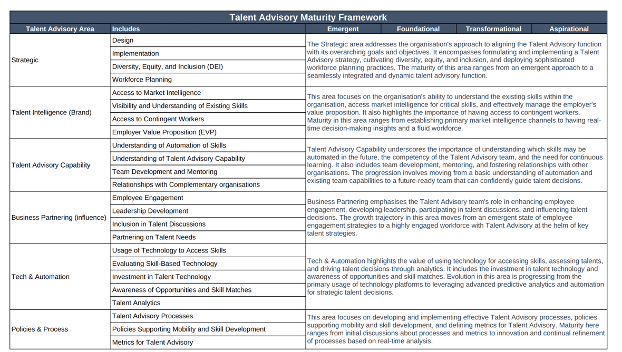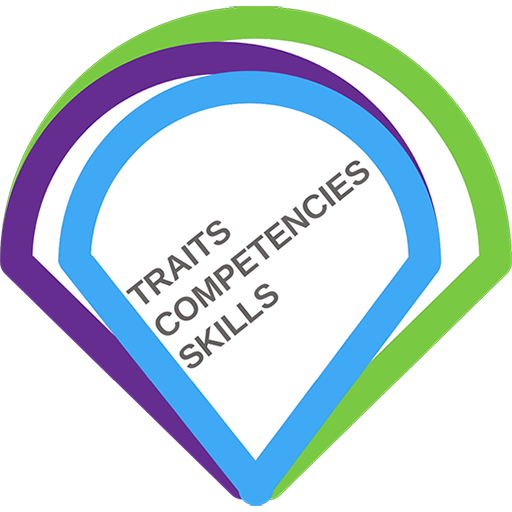Automation has been a buzzword in recent years for good reason – it has been transforming industries and fundamentally altering the job market. As we move towards an increasingly automated world, strategic talent acquisition and management is more critical than ever to help businesses adapt to these changing market conditions.
From Talent Acquisition to Talent Advisory
In a world of rapid technological advancements, more than merely filling vacancies is required. Organisations require a more nuanced, strategic approach to talent acquisition that aligns with future trends, including automation. This is where Talent Advisory comes into the picture.
Talent Advisors are more than just recruiters – they are strategic partners who employ critical skills such as strategic thinking, market intelligence, and analytics to navigate the complex landscape of automation and skills. The transition from traditional recruiters to Talent Advisors can take years of development through experimentation and adjustment.
This leads us to the automation conundrum – how do you provide the Talent Advisory services the business requires here and now without years of trial and error?
The TCS Insights approach enables you to quickly upskill by implementing a comprehensive development framework consisting of assessments, workshops, and coaching. To help contextualise this; we can explore the impact across three key measurable attributes. These attributes are part of the TCS Insights Talent Advisory Maturity Model, a benchmarking tool embraced by progressive recruitment teams to gauge the effectiveness of their talent management function and their aptitude for consistent enhancement and growth.
Here is a snapshot of the model, and if you are keen to understand where you currently sit in this framework, go ahead and complete this free questionnaire (it only takes about 10 minutes).

3 key attributes TA functions must have to tackle automation effectively
1. Strategic Thinking
Talent Advisors apply strategic thinking in several ways to understand and act on how automation trends can impact the organisation’s talent needs. They need to grasp the nature of automation – which job roles can be automated, which cannot, and which can be partially automated. This understanding is fundamental to devising a strategic plan.
Once they understand the impact of automation on various job roles, Talent Advisors can strategise about the kind of talent the organisation will need. This could involve deciding which roles to fill with human talent, which to automate, and which to redesign to blend human and machine work.
As part of their strategic thinking, Talent Advisors also anticipate the skills that employees will need in an automated environment. For example, as routine tasks become automated, critical thinking, creativity, and emotional intelligence become more valuable.
2. Market Intelligence
Talent Advisors use market intelligence to keep their finger on the pulse of automation trends and the shifting skills landscape. They monitor industry trends and technological advancements to understand how the automation landscape evolves and what that means for talent acquisition and management. This includes keeping an eye on competitors’ responses to automation trends.
Using market intelligence, Talent Advisors can identify which skills are becoming more critical as automation increases. They then ensure that the organisation is seeking and attracting talent that possesses these skills, positioning the company to succeed in an automated future.
3. Data Analytics
Talent Advisors leverage data analytics to address the challenges and opportunities automation presents. Talent Advisors can forecast how automation will impact workforce needs by analysing data on job roles, skills, and automation trends. For instance, they might predict a decline in the market for specific roles and an increase in others, allowing the organisation to plan accordingly.
Analytics can also help Talent Advisors identify skills gaps in the organisation that must be addressed to prepare for an automated future. This might involve upskilling or reskilling employees or recruiting new talent with the needed skills.
Talent Advisors could also use Analytics to track the effectiveness of interventions to prepare for automation. For example, suppose a reskilling programme is not leading to the desired improvements. In that case, analytics can highlight this issue to enable the team to adjust the programme to ensure the team is improving.
By developing these three key attributes, the talent function can better understand and navigate the shift toward automation, ensuring they have the right talent and skills to help their organisation prepare for the future.
Talent Advisory’s role in managing automation and skills
By understanding which skills will increase in demand, your organisation can position itself as a magnet for top talent, solidifying your competitive edge. An automated world necessitates an innovative workforce. You can foster a reactive and proactive culture by focusing on skills required for the automated era, creating a more liquid workforce.
All this can be achieved through a Talent Advisory approach. Your organisation can do more than survive in an automated world; it can lead. But the journey begins with understanding your current standing. Evaluate your organisation against our maturity framework today; the future is nearer than you think. Don’t let your competitors get there first.
Photo by Tim Mossholder on Unsplash


Recent Comments